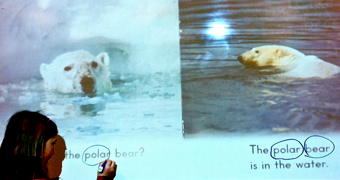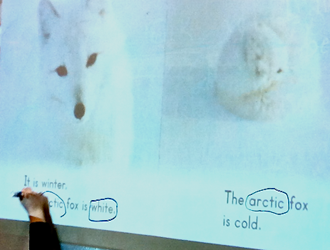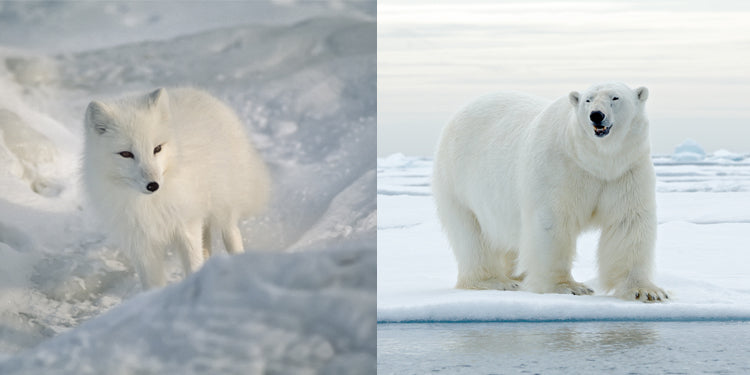This is a guest blog post from Susanna Westby of
Whimsy Workshop
, and it includes a FREE download with worksheets! See the bottom of the post for the link to download, and check back frequently for more great classroom-tested ideas!
If you'd like to see her other contributions to this blog, click here
!
Hello again! I’m Susanna from Whimsy Workshop Teaching, and today I’m sharing with you some examples of how to use informational texts for animal habitat units. As an example, I use some of the Arctic habitat books by Lee Waters from the Zoozoo Animal World collection .
We often begin with a whole-class picture walk as I project images of the book for the class. Our class theme for December is the Arctic, so students had some background knowledge already. My key concepts for these lessons were different survival techniques, such as warm fur and camouflage. We discussed these as we looked at the pictures.
As we read through Polar Be ar , students quickly caught on to the repeating text and chanted together as we read. We noted that in each picture, the polar bear was well hidden in the snow or ice.


Next, we repeated the activity with Arctic Fox , and noticed that while the fox could hide in the snow, it also changed its fur color to be camouflaged in the summer! Students found this to be amazing! This led to a lively class discussion generating questions such as “How does it change colors? Does it all fall out and grow back brown, or does the fur just change color by itself? How does the fox know when to change it’s color? Is the white fur warmer than the brown fur?” Wonderful questions!


I also have older students in my multi-age class who could easily read the text. They instead were challenged by the Talking Points section in the back of the book, which offered more complex text and information to supplement each page. We loved this way of differentiating!
For our written component, students completed a simple sentence about either the arctic fox or the polar bear. Recalling the repeating text from the polar bear book (“Where is the polar bear?”), students had to finish the phrase “The polar bear is ___________” or “The arctic fox is__________.” They could choose from any of the places described in the book: in the water, in the snow, or on the ice.
To illustrate, we tried something fun! Students drew their polar bear or arctic fox on their white paper using white crayon. Of course it was very hard to see, and they challenged their partners to find the camouflaged animal on the page. It took a bit of looking to see the shiny wax of the animal! Next, students colored over their animal with gray or blue felt pen, which resists the white crayon, to reveal their animal!


These books were perfect for delivering non-fiction information to my grade one and grade two students; the information was displayed in manageable bits, and the pictures were engaging. Best of all, the differentiated text provided an opportunity to feel successful and independent in their learning.
If you would like to try this with your class, the activity sheets we used are included as a free download at the bottom of the page.
I have been teaching primary grades for 20 years. My classroom is a place of hands-on, creative learning where students feel safe to make mistakes and learn from them! I live near Vancouver, BC Canada with my music-teacher husband and two teenage boys. More literacy ideas and graphics can be found on my blog, Whimsy Workshop Teaching .
~~~
Download your free Arctic animals worksheets by clicking the worksheet image below! For more information on the Zoozoo Animal World series, click here to visit our website , or click the image on the right to download a series information sheet with highlights and key features.















































![6 Fun and Easy Activities to Practice Sequencing [Grades K-1]](http://www.hameraypublishing.com/cdn/shop/articles/Red_Typographic_Announcement_Twitter_Post-5_bf1ae163-a998-4503-aa03-555b038d1b76_600x.png?v=1689961568)
![Leveraging Prior Knowledge Before Writing and Reading Practice [Grades 1–2]](http://www.hameraypublishing.com/cdn/shop/articles/Red_Typographic_Announcement_Twitter_Post-4_600x.png?v=1689961965)




